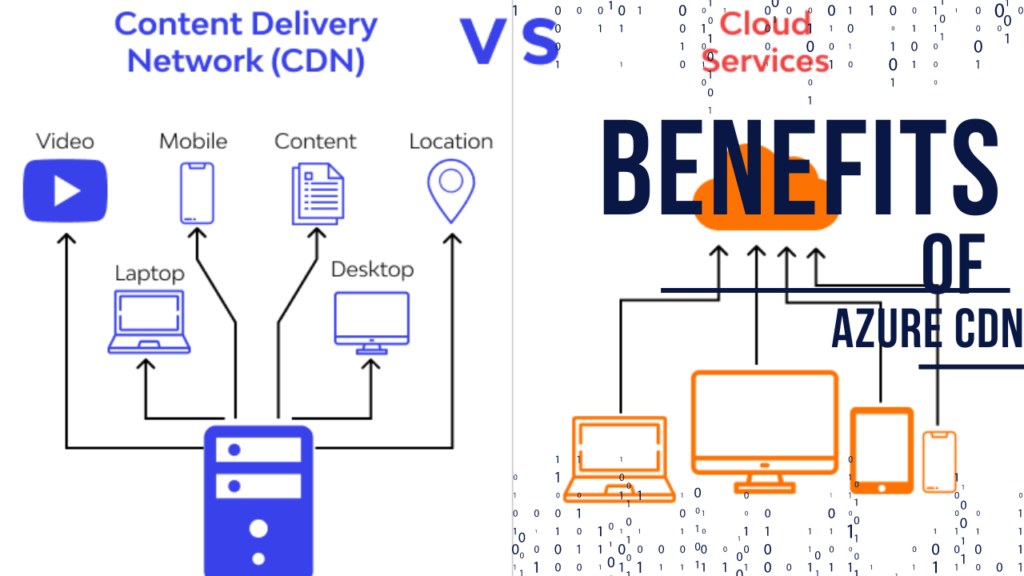
The Azure Content Delivery Network (CDN) is a service offered by Microsoft that helps improve the speed and reliability of delivering content to users around the world. It does this by caching your content on a network of servers, called edge servers, that are strategically located in various places around the globe.
The exact launch date of Azure CDN isn’t publicly available, but it’s a well-established service within the Microsoft Azure cloud platform. Azure itself launched in 2010, so Azure CDN likely emerged around that time or shortly after.
Here are some additional points.
- Initially, Azure CDN only offered integration with other Azure services.
- A significant update in June 2015 allowed users to connect custom origins to Azure CDN, making it usable for websites not hosted on Azure.
Azure CDN can optimise applications in a few different ways:
- Caching static content.
- Content delivery network (CDN) Points of Presence (POPs).
- Network optimisations.

Benefits of using Azure CDN for application optimisation:
- Improved user experience.
- Increased scalability.
- Reduced bandwidth costs.
Azure CDN benefits developers in several ways that can improve their applications and user experience:

- Improved Performance and User Experience: By caching static content on geographically distributed edge servers, Azure CDN reduces latency for users by delivering content from the server closest to them.
- Scalability: Azure CDN can handle surges in traffic without compromising performance. This is because content is served from edge locations instead of your origin server, which can become overloaded during traffic spikes.
- Reduced Costs: By offloading static content delivery to Azure CDN, you can reduce bandwidth costs associated with serving content from your origin server.
- Security Features: Azure CDN offers various security features like custom domain HTTPS, DDoS protection, and WAF (Web Application Firewall) to help safeguard your content and web applications from malicious attacks.
- Integration with Azure Services: Azure CDN integrates seamlessly with other Azure services like web apps, storage accounts, and Azure Front Door. This allows for easy setup and management of your CDN solution within the Azure ecosystem.
- Monitoring and Analytics: Azure CDN provides detailed metrics and logs to help you monitor CDN performance, identify areas for optimisation, and gain insights into user behaviour.
Jobs related to Azure CDN:
- Azure CDN Developer: Responsible for designing, deploying, and managing Azure CDN solutions. They configure caching policies, monitor performance, and troubleshoot issues. Average Salary: 90,000 USD-130,000 USD.
- Azure Cloud Architect: Designs and implements cloud solutions on Microsoft Azure, including Azure CDN. They have a broad understanding of Azure services and how they work together. Average Salary: 120,000 USD-160,000 USD.
- Cloud Network Engineer: Designs, configures, and manages cloud network infrastructure, including firewalls, load balancers, and CDNs. They may work with Azure CDN to optimise content delivery. Average Salary: 80,000 USD-110,000 USD.
- DevOps Engineer: Automates the process of building, testing, and deploying applications. They may use Azure DevOps tools to manage Azure CDN configurations. Average Salary: 95,000 USD -125,000 USD.
- A Web Performance Engineer: Optimises the performance of websites and applications. They may use Azure CDN to improve website loading times. Average Salary: 85,000 USD – 115,000 USD.
The future of Azure CDN

Overall, Azure CDN is a valuable tool for optimising application performance and delivering a superior user experience. As technology continues to evolve, Azure CDN is expected to become even more essential for businesses looking to deliver fast, reliable, and secure applications.






